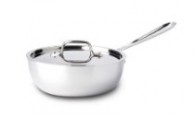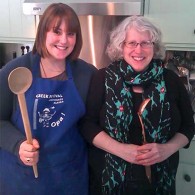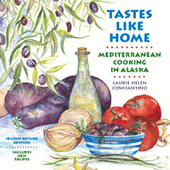Falafel almost whipped me, but I prevailed in the end.
My friend Salwa, a Christian Palestinian, gave me her recipe ages ago, when I first started working on the book that became Tastes Like Home: Mediterranean Cooking in Alaska (a fundraiser for Alaska’s only Greek Orthodox Church). She made the recipe sound simple. Initially, it wasn’t.
The first few times I made falafel were miserable failures. Because I couldn’t get them right before the book went to print, the first edition of Tastes Like Home didn’t include a falafel recipe (the second edition will).
After re-consulting Salwa several times and reviewing other recipes for this wonderful Middle Eastern treat, I eventually had an epiphany and figured out how to make great tasting falafel every time. Trust me; if you follow the directions, falafel are simple.
The key to making tasty falafel is to use dried chickpeas (my first batch was made with cooked chickpeas; the texture was awful), soak the chickpeas at least 24 hours (I only soaked the chickpeas overnight for my second batch; everything about those falafel were wrong), and purée the soaked chickpeas until very smooth (in my third batch, I ground chickpeas to the size of dried couscous; these fell apart in the hot oil).
The precise origins of falafel are lost in the mists of time. In The New Book of Middle Eastern Food, Claudia Roden, who grew up in Egypt, says falafel is “one of Egypt’s national dishes, welcome at all times, for breakfast, lunch, or supper.” She says the recipe originally came from Egyptian Copts, who make “mountains” of them during Lent.
Not everyone agrees that Copts invented falafel. As with many traditional foods in the Mediterranean basin, including moussaka and baklava, there are lively debates about falafel’s origins. In recent years, falafel debates have sometimes devolved into political discussions about the relationship between Arabs and Israelis.
It doesn’t matter who invented a recipe, whether it be baklava or falafel, so long as it tastes good. I agree with Dr. Zafer Yenal, a Turkish sociology professor, who says disputing the origin of recipes is a form of nationalism that can lead to dangerous “we and they” attitudes. Dr. Yenal says foods should be identified by the regions where they’re eaten today and not by who originally invented them.
Egyptian falafel is made using peeled and dried fava beans (not the yellow split pea Greeks call fava). In Syria, Lebanon, and Jordan, Claudia Roden says falafel is made with a mixture of chickpeas and fava beans, while Israelis and Palestinians prefer it made only with chickpeas.
I wondered whether there was a significant flavor difference between falafels made with chickpeas and those made with dried fava beans. Last night, I made separate batches of falafel made with each bean. My husband couldn’t tell the difference. I tasted a slight difference, but not enough for me to prefer one over the other. Both were great.
I served falafel with Salwa’s tabbouleh recipe from Tastes Like Home: Mediterranean Cooking in Alaska. The fresh flavor of tabbouleh (bulgur, parsley, and tomato salad) marries well with fried falafel. A simple tomato and onion salad is another great accompaniment.





